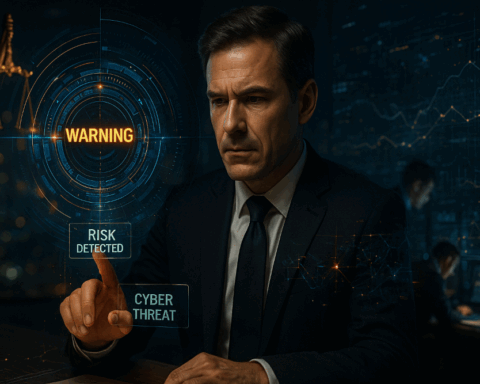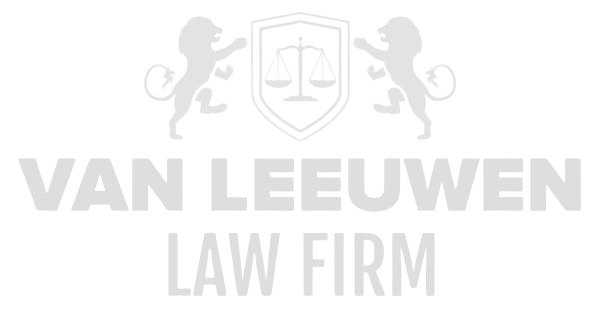Anti-Money Laundering (AML) monitoring and investigations form an indispensable foundation for safeguarding the integrity of national and international businesses, their executives and regulators, as well as government agencies. In an increasingly complex financial landscape—where cross-border transactions and digital innovations have become the norm—the vulnerability to financial crimes such as money laundering, fraud and corruption is heightened. Early detection and rigorous investigation of suspicious transactions are essential for combating financial crime and preserving the soundness of business operations. These activities are not only crucial for complying with stringent laws and regulations but also play a key role in protecting the reputation and trust that stakeholders place in an organization.
The scale and complexity of financial crime demand a deep, structured approach that goes beyond traditional compliance requirements. Effective AML monitoring and investigation require an integrated system of data analytics, risk assessment and forensic inquiry capable of recognizing patterns and anomalies within vast datasets. At the same time, organizations must be aware of the legal and operational consequences of allegations and inquiries, which can not only jeopardize business continuity but also result in reputation damage and substantial financial penalties. Thus, AML monitoring and investigations are core activities intimately linked to an organization’s broader risk management and crisis response efforts.
Advanced Detection of Suspicious Transactions
The ability to detect suspicious transactions accurately and swiftly lies at the heart of effective AML monitoring. Advanced technologies—such as artificial intelligence, machine learning and pattern recognition—play a pivotal role in analyzing massive datasets and identifying unusual behaviors that may signal money laundering or other forms of financial crime. These tools enable organizations to flag potential risks in real time and respond proactively.
The complexity of modern transactions, often characterized by international cross-border flows, the use of cryptocurrencies or complex legal entities, demands deep expertise and specialized analytical methods. By combining automation with expert interpretation, organizations can reduce false positives and identify genuine suspicious activities with greater precision. This not only boosts the effectiveness of the monitoring process but also ensures more efficient allocation of resources within the organization.
Moreover, an effective detection system is embedded within a continuous improvement cycle in which algorithms and criteria are constantly optimized based on fresh insights and developments in the financial and legal spheres. This dynamic approach keeps AML monitoring aligned with evolving threats and regulations, ensuring organizations remain one step ahead of would‑be criminals.
Comprehensive Risk Assessment and Customer Profiling
A detailed risk assessment forms the backbone of targeted AML monitoring and investigations. By systematically evaluating customers, transactions and market conditions, organizations can establish risk profiles that indicate where heightened scrutiny is warranted. These profiles are vital for deploying resources efficiently and prioritizing investigative efforts.
Customer profiling goes beyond merely recording basic information. It involves in‑depth analysis of the nature and complexity of client relationships, the provenance of funds and potential exposure to high‑risk sectors or geographic regions. Mapping these factors provides a holistic view that underpins every subsequent step in the AML process. This prevents a one‑size‑fits‑all approach and enables the delivery of tailored measures that address each scenario’s specific risks.
Risk assessment and customer profiling are ongoing endeavors, subject to regular review and updating based on new data and changing circumstances. This dynamic nature ensures AML monitoring remains relevant and effective, even in a rapidly shifting financial and regulatory environment.
In-Depth Investigations and Forensic Analysis
Once suspicious transactions have been detected, a comprehensive investigation follows that goes well beyond surface-level observations. Such investigations require a combination of forensic data analysis, legal expertise and financial market knowledge to uncover the true nature and extent of potential wrongdoing. The objective is not only to gather facts but also to understand the intent and methodologies of those involved.
Forensic analysis includes tracing money flows, identifying hidden relationships and exposing structures that facilitate abuse. By blending technical tools with deep domain expertise, investigators can construct a clear, conclusive picture—one that supports internal decision‑making and, if necessary, legal proceedings. This rigorous approach helps dismantle complex money‑laundering schemes and other forms of financial crime effectively.
The investigative process is also governed by strict procedures for evidence preservation and documentation, ensuring that the information gathered is reliable and legally defensible. This strengthens an organization’s position in any legal disputes and upholds the integrity of the entire AML framework.
Legal Compliance and Reporting Obligations
AML monitoring and investigations operate within a stringent legal framework set by national and international regulations. Organizations must report suspicious transactions promptly to the relevant authorities, such as Financial Intelligence Units (FIUs). Complying with these reporting obligations is crucial for avoiding sanctions and for contributing effectively to the broader fight against financial crime.
Legal compliance spans every stage of the AML process—from customer onboarding and risk assessment to ongoing monitoring and reporting. This means that procedures and systems must be continually tested against current laws and regulations, including any changes arising from international agreements and national transpositions. Failure to adhere to these rules can lead to hefty fines, reputational damage and even criminal prosecution of involved parties.
It is equally important that reports to regulators are prepared with care, completeness and transparency. Such reports must meet formal requirements and be sufficiently clear and substantiated to facilitate effective enforcement actions. Ensuring this quality demands close collaboration among an organization’s legal, compliance and operational teams.
Impact on Reputation and Operational Continuity
Allegations of involvement in financial crime carry significant reputational risks with far‑reaching implications for both domestic and international enterprises as well as government bodies. Reputation damage can erode the trust of customers, investors and other stakeholders, undermining market position and future growth prospects. It can also trigger stricter supervisory measures and heightened scrutiny.
Operational continuity can suffer greatly, too, as investigations and legal processes often disrupt normal business activities. Time‑consuming audits, increased compliance requirements and potential asset freezes can put pressure on day‑to‑day operations, resulting in delays, higher costs and reduced productivity.
Consequently, AML monitoring and investigations must be designed not only to detect and counter criminal activity effectively but also to minimize adverse impacts on reputation and operations. A balanced, strategic approach helps maintain trust and stability.
Integration of Technology and Human Insight
While technological innovations like artificial intelligence and big‑data analytics have revolutionized AML monitoring, human insight remains indispensable for interpreting complex data and making informed decisions. The fusion of cutting‑edge technology and expert analysis creates a powerful synergy that significantly enhances the effectiveness of AML processes.
Technology uncovers patterns invisible to the human eye and automates routine checks, boosting the speed and scalability of monitoring efforts and allowing focus on the most critical cases. However, without a profound understanding of the financial sector, legal context and human behavior, technology alone is insufficient.
Human expertise is crucial for assessing nuances, discerning motives and evaluating risk within the broader organizational and environmental context. This combination yields an adaptive approach that is both efficient and reliable, capable of responding to evolving threats and regulatory requirements.
Internal Oversight and Governance
Effective internal oversight and clear governance structures are fundamental to successful AML monitoring and investigations. Board members and supervisors bear significant responsibility for ensuring that robust control mechanisms are in place and that the organization complies with applicable laws and regulations. This requires a proactive stance and ongoing engagement at the highest levels.
Governance encompasses policy formulation, allocation of responsibilities and monitoring the implementation of AML measures. Transparency and reporting to the board are essential for identifying and managing risks in a timely manner. A strong governance framework also fosters a culture of compliance and integrity, encouraging employees to report suspicious activities and take risks seriously.
An effective internal oversight mechanism also helps uncover gaps and weaknesses in the AML framework, enabling targeted enhancements. This continuous evaluation and refinement process bolsters the organization’s resilience against financial crime.
Collaboration with Regulators and Law Enforcement
Close collaboration with regulators and law enforcement agencies is vital for achieving AML objectives. Through open, constructive communication, signs of financial crime can be detected more quickly and followed up more effectively. This markedly improves the success of investigations and prosecutions.
Collaboration involves not only timely and accurate reporting of suspicious transactions but also information sharing, facilitation of inquiries and participation in joint initiatives or task forces. Building trust and maintaining dialogue with these authorities contributes to a comprehensive approach to financial crime, both nationally and internationally.
Moreover, cooperation with external partners promotes knowledge exchange and the development of best practices, equipping organizations to face new challenges. This network of stakeholders enhances the overall effectiveness of AML measures and fosters a safer financial system.
Strategic Positioning within Risk Management
AML monitoring and investigations are integral components of an organization’s broader risk management framework. By positioning these activities strategically within enterprise risk management, organizations create a coherent system that not only reacts to threats but also proactively identifies and mitigates risks. This strengthens overall organizational resilience.
A holistic approach ensures that AML measures align with other compliance and security initiatives—such as fraud prevention, cybersecurity and internal controls. This integration enables risk assessment and mitigation from multiple perspectives, preventing blind spots and ensuring efficient resource utilization.
Viewing AML monitoring and investigations as strategic tools empowers organizations to anticipate regulatory changes, market shifts and emerging threats. This supports sustainable operations that are both compliant and resilient.
Preparation for Legal and Reputational Challenges
In a world where allegations of financial crime can inflict severe legal and reputational damage, thorough preparation is indispensable. AML monitoring and investigations provide the essential foundation for responding effectively to potential incidents and disputes.
Preparation entails documenting all pertinent findings, drafting clear reports and developing crisis‑management scenarios. Early insight into potential risks and incidents enables organizations to take timely measures to prevent escalation and limit harm.
Furthermore, strong preparation enhances an organization’s ability to defend its position in legal proceedings and public communications. This bolsters stakeholder confidence and contributes to the restoration and preservation of reputation during challenging times.














